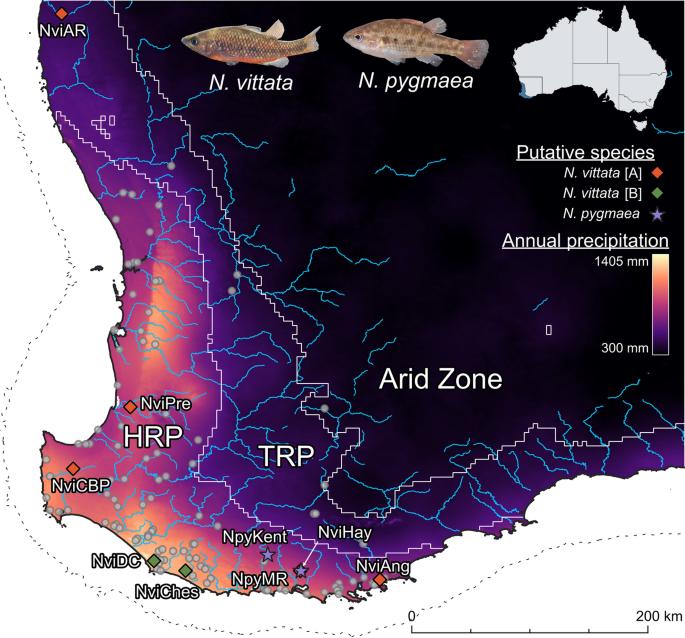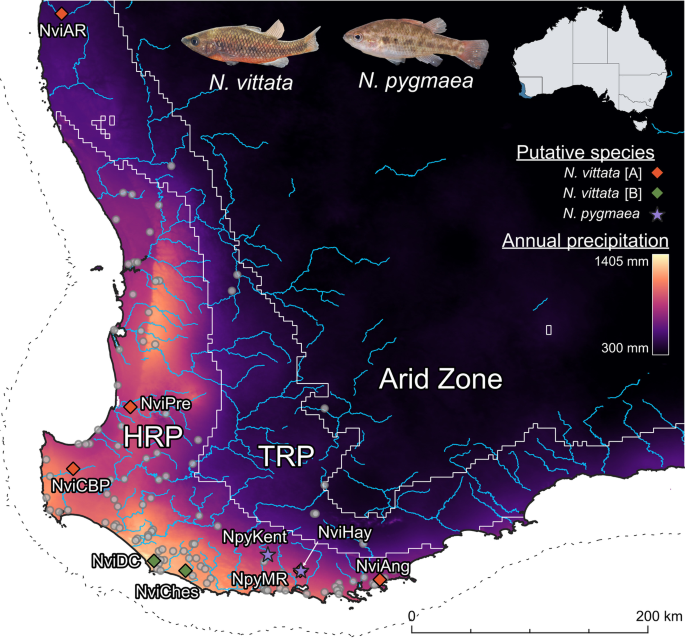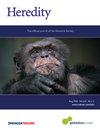长期的气候稳定性推动了温带生物多样性热点地区淡水鱼系分化的积累和维持。
IF 3.1
2区 生物学
Q2 ECOLOGY
引用次数: 0
摘要
据预测,人为气候变化将在全球范围内造成区域性气候破坏和不稳定。在生物多样性热点地区,这些影响可能会加剧,这不仅是因为物种丧失的可能性更大,还因为地方性品系在过去可能没有经历过显著的气候变异,从而限制了它们应对快速气候变化的进化潜力。我们评估了气候稳定性对西澳大利亚西南部(SWWA)生物多样性热点地区特有的淡水鱼类群的品系积累和持续性的作用。利用 19,426 个基因组(ddRAD-seq)标记和物种分布模型,我们探索了西部侏儒鲈(Nannoperca vittata)和小侏儒鲈(Nannoperca pygmaea)的系统地理历史,评估了种群分化和系统发生关系,划分了物种,并估计了从上新世到 2100 年物种分布的变化。我们发现了由三个分化群组成的两个深层系统群,这些系统群自上新世以来就没有历史联系。我们保守地认为,它们代表了三个孤立的物种,在一个广泛分布的物种中还具有额外的种内结构。由于气候稳定,所有种系都表现出长期的隔离和持续模式,但在未来气候变化的情况下,其分布范围可能会显著收缩。我们的研究结果凸显了气候稳定性在使孤立的种系得以在西南水域持续存在方面所起的作用。这一生物多样性热点地区正受到持续气候变化和栖息地改变的双重威胁,这可能会进一步威胁到整个地区以前未被发现的隐性多样性。本文章由计算机程序翻译,如有差异,请以英文原文为准。


Long-term climatic stability drives accumulation and maintenance of divergent freshwater fish lineages in a temperate biodiversity hotspot
Anthropogenic climate change is forecast to drive regional climate disruption and instability across the globe. These impacts are likely to be exacerbated within biodiversity hotspots, both due to the greater potential for species loss but also to the possibility that endemic lineages might not have experienced significant climatic variation in the past, limiting their evolutionary potential to respond to rapid climate change. We assessed the role of climatic stability on the accumulation and persistence of lineages in an obligate freshwater fish group endemic to the southwest Western Australia (SWWA) biodiversity hotspot. Using 19,426 genomic (ddRAD-seq) markers and species distribution modelling, we explored the phylogeographic history of western (Nannoperca vittata) and little (Nannoperca pygmaea) pygmy perches, assessing population divergence and phylogenetic relationships, delimiting species and estimating changes in species distributions from the Pliocene to 2100. We identified two deep phylogroups comprising three divergent clusters, which showed no historical connectivity since the Pliocene. We conservatively suggest these represent three isolated species with additional intraspecific structure within one widespread species. All lineages showed long-term patterns of isolation and persistence owing to climatic stability but with significant range contractions likely under future climate change. Our results highlighted the role of climatic stability in allowing the persistence of isolated lineages in the SWWA. This biodiversity hotspot is under compounding threat from ongoing climate change and habitat modification, which may further threaten previously undetected cryptic diversity across the region.
求助全文
通过发布文献求助,成功后即可免费获取论文全文。
去求助
来源期刊

Heredity
生物-进化生物学
CiteScore
7.50
自引率
2.60%
发文量
84
审稿时长
4-8 weeks
期刊介绍:
Heredity is the official journal of the Genetics Society. It covers a broad range of topics within the field of genetics and therefore papers must address conceptual or applied issues of interest to the journal''s wide readership
 求助内容:
求助内容: 应助结果提醒方式:
应助结果提醒方式:


